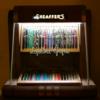Voodoo Ergonomics?
-
Forum Statistics
357.5k
Total Topics4.7m
Total Posts -
Member Statistics
129,965
Total Members18,857
Most OnlineNewest Member
Yannsemek
Joined -
Images
-
Albums
-
Black Vac OS Sleeve feb 2022
- By VacNut,
- 0
- 0
- 11
-
Vintage Ink
- By PithyProlix,
- 0
- 7
- 21
-
Lam1 Album
- By Lam1,
- 0
- 0
- 25
-
Glamour Shots
- By Penguincollector,
- 0
- 0
- 38
-
Extra Fine Nib Ink Reviews (23 of n)
- By LizEF,
- 0
- 17
- 17
-

















.thumb.jpg.f07fa8de82f3c2bce9737ae64fbca314.jpg)









Recommended Posts
Create an account or sign in to comment
You need to be a member in order to leave a comment
Create an account
Sign up for a new account in our community. It's easy!
Register a new accountSign in
Already have an account? Sign in here.
Sign In Now